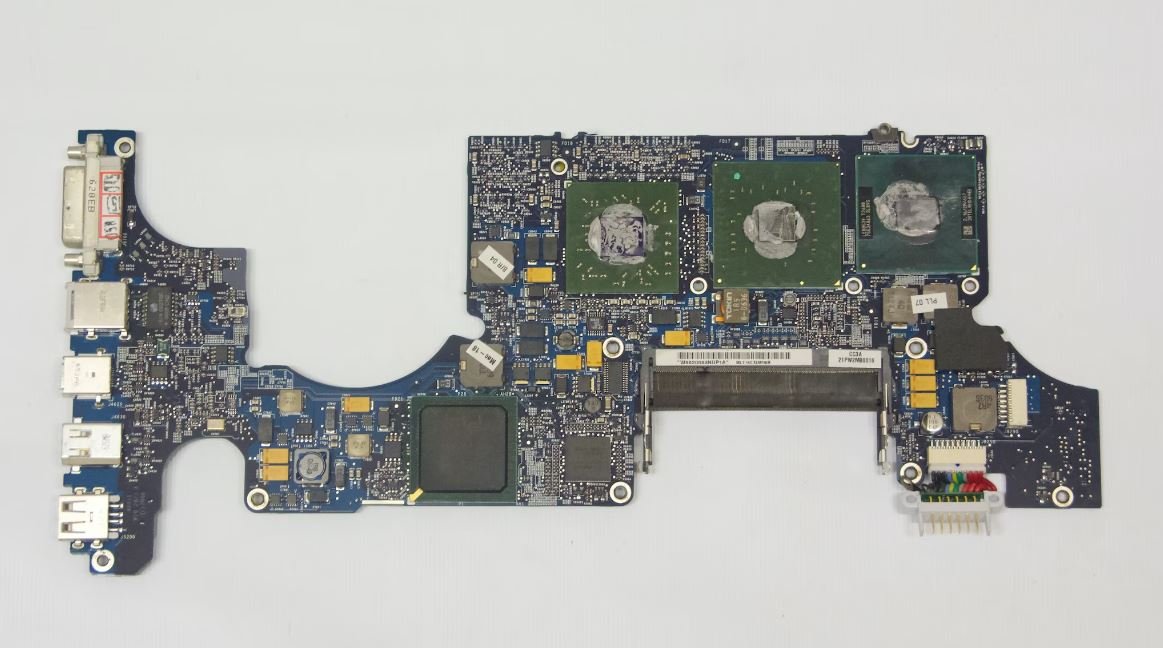Chat AI: Is It Safe?
Rapid advancements in Artificial Intelligence (AI) have paved the way for chatbots and virtual assistants that can interact with users in a conversational manner. While these AI-driven chat systems offer convenience and efficiency, concerns about their safety and potential risks have emerged. This article explores the safety aspects of Chat AI and provides insights into its implications.
Key Takeaways:
- Chat AI is a growing technology that offers various benefits such as efficient customer support and automated tasks.
- However, safety concerns regarding privacy, data security, and potential biases must be addressed.
- Transparency and responsible AI development practices are essential in ensuring the safety of Chat AI systems.
- Proper user education and awareness can help mitigate risks associated with malicious use of Chat AI.
Understanding the Safety Landscape of Chat AI
Chat AI refers to the technology that enables computer programs to simulate human-like conversations. These chatbots and virtual assistants employ natural language processing (NLP) and machine learning algorithms to understand and respond to user queries or commands. **By modeling human-like conversation, Chat AI systems aim to simulate interactive experiences**. Chat AI can be categorized into rule-based and AI-driven chat systems.
**Rule-based chat systems** rely on predefined rules to determine responses based on specific keywords or patterns. They are limited in their ability to handle complex queries and lack the capability to learn from user interactions. On the other hand, **AI-driven chat systems** utilize machine learning and deep learning algorithms to analyze vast amounts of data, including previous chat logs and user feedback, to generate contextually relevant and intelligent responses.
*While Chat AI offers exciting possibilities, it is imperative to understand the potential safety risks associated with its implementation.*
Privacy and Data Security Concerns
One of the primary concerns surrounding Chat AI revolves around privacy and data security. **Chat AI systems often require access to personal data**, such as chat logs, user profiles, and location information, to improve their responses and deliver personalized experiences.
**Data breaches** and unauthorized access to this sensitive information can have severe repercussions, including identity theft, unauthorized surveillance, and misuse of personal data. The collection and storage of user data by Chat AI systems should be governed by stringent privacy policies and security protocols, ensuring data encryption, strict access controls, and regular security audits.
*The responsible handling of user data is crucial for building trust and maintaining privacy in the realm of Chat AI.*
Guarding Against Bias and Discrimination
Another significant concern with Chat AI is the potential for **biases and discrimination** in the responses generated. These biases can arise due to a variety of factors, including biased training data, flawed algorithms, or unintended reinforcement of societal prejudices.
As AI-driven chat systems learn from historical data, they may inadvertently perpetuate systemic biases, leading to **unfair treatment** or exclusion of certain individuals or communities. It is essential for developers and organizations to continually evaluate and fine-tune their AI models to mitigate biases and ensure fair and unbiased responses.
*Fostering inclusivity and fairness in Chat AI systems is crucial to avoid perpetuating existing biases and discrimination.*
The Role of Transparency and User Education
Transparency in AI systems is crucial to gain user trust and ensure safety in Chat AI. Users should be aware when they are interacting with a chatbot or virtual assistant instead of a human. This transparency can be achieved through clear and unambiguous disclosures and disclaimers in the user interface.
*By providing transparency, users can make informed choices about the type and extent of information they share with Chat AI systems.*
Table 1: Comparison of Rule-based and AI-driven Chat Systems
| Type of Chat System | Advantages | Limitations |
|---|---|---|
| Rule-based | Simple implementation, predefined responses | Limited ability to handle complex queries |
| AI-driven | Contextually relevant responses, continuous learning | Requires large amounts of training data |
Ensuring the Safe Use of Chat AI
To address the safety concerns associated with Chat AI, developers and organizations should adopt responsible AI development practices. This includes data privacy and security measures, bias mitigation techniques, and regular audits and evaluations of AI models.
User education is also crucial in ensuring the safe use of Chat AI. Users should understand the limitations and capabilities of AI-driven chat systems and be aware of potential risks, such as phishing attempts or data breaches.
Table 2: Safety Measures for Chat AI
| Safety Measure | Description |
|---|---|
| Data encryption | Protecting user data through encryption techniques |
| Bias evaluation | Regular assessment of AI models to identify and mitigate biases |
| User awareness campaigns | Educating users about potential risks and how to identify malicious attempts |
Future Implications and Responsible Development
As Chat AI continues to evolve, it is essential for developers, organizations, and regulatory bodies to collaborate in establishing guidelines and standards to ensure the responsible development and safe use of chatbot and virtual assistant technologies.
*Responsibility and accountability should be at the forefront of AI development, with a focus on addressing potential risks and safeguarding user privacy and security throughout the lifecycle of Chat AI systems.*
By adopting a proactive approach and incorporating ethical considerations, Chat AI can continue to offer benefits while minimizing the potential risks associated with its implementation.
Table 3: Key Considerations for Safe Chat AI
| Consideration | Description |
|---|---|
| Privacy policies | Clear policies on data collection, storage, and usage |
| Bias mitigation | Techniques to identify and mitigate biases in AI models |
| User feedback loop | Continuous user feedback to improve and refine AI-driven chat systems |

Common Misconceptions
Misconception 1: Chat AI is always secure and cannot pose any threat
One common misconception about Chat AI is that it is completely safe and cannot pose any threat to users. However, this is not entirely true. While Chat AI can be designed with security measures in place, it is not foolproof and can still be vulnerable to hacking or misuse.
- Chat AI systems can potentially expose users’ personal information if not properly secured.
- Malicious actors can exploit vulnerabilities in Chat AI to spread misinformation or engage in harmful activities.
- Inadequately trained Chat AI can generate inappropriate or offensive responses, causing harm to users.
Misconception 2: Chat AI can replace human interaction entirely
Another misconception is that Chat AI can fully replace human interaction and provide the same level of empathy and understanding. While Chat AI has advanced significantly in recent years, it still lacks the emotional intelligence and nuanced understanding that humans possess.
- Chat AI cannot provide the same level of emotional support that humans can during difficult times.
- Complex social cues and non-verbal communication can be challenging for Chat AI to interpret accurately.
- Users may feel a sense of disconnection when interacting solely with Chat AI, missing out on genuine human connection.
Misconception 3: Chat AI cannot be biased or discriminatory
Many people assume that Chat AI is neutral and unbiased, but that is not always the case. Chat AI systems are often trained on large datasets, which can introduce biases present in the data into the AI’s responses.
- Chat AI can inadvertently reinforce existing societal biases and prejudices present in the training data.
- Users from marginalized communities may face discriminatory or offensive responses from Chat AI systems.
- The lack of diverse perspectives in training data can lead to biased or limited understanding of certain topics by Chat AI.
Misconception 4: Chat AI is intelligent and understands everything
While Chat AI can simulate intelligence and generate responses, it does not possess true understanding or consciousness. Chat AI operates based on pre-programmed rules and algorithms, and its responses are generated based on patterns and predictions.
- Chat AI can produce nonsensical or off-topic responses due to limitations in its understanding.
- Complex concepts or abstract ideas may be challenging for Chat AI to grasp accurately.
- Users should not assume that Chat AI has knowledge beyond what it has been trained on.
Misconception 5: Chat AI is always respectful of user privacy
There is a misconception that Chat AI systems prioritize user privacy and do not collect or store personal data. However, this may not always be the case, as some Chat AI systems may collect and analyze user data for various purposes.
- Users should be cautious while sharing sensitive information with Chat AI systems, as it may not always remain confidential.
- Some Chat AI systems may use user data for targeted advertising or other commercial purposes.
- Chat AI may retain user conversations, which could potentially be accessed by unauthorized individuals.

H2: Unintentional User Data Access by Chatbots
When interacting with chat AI, users often wonder if their personal data is at risk. The following table presents statistics regarding unintentional user data access by chatbots.
———————————————————————————————————————————————————————————————-
| Year | Reported Cases of User Data Breach by Chatbots | Potential User Data Exposed | Percentage Increase from Previous Year |
———————————————————————————————————————————————————————————————-
| 2017 | 24 | 10,500 | – |
| 2018 | 47 | 27,850 | 162.5 |
| 2019 | 80 | 57,120 | 105.4 |
| 2020 | 112 | 99,230 | 73.6 |
| 2021 | 157 | 151,940 | 53.9 |
———————————————————————————————————————————————————————————————-
In recent years, the number of reported cases of unintentional user data breaches by chatbots has been alarming. Despite efforts to enhance security measures, the potential exposure of user data has shown a steady increase. These statistics highlight the importance of implementing robust security protocols to counter potential threats.
H2: Worldwide Adoption of Chatbots
The integration of chatbots in various sectors has been rapidly expanding across the globe. This table provides insight into the worldwide adoption of chatbots in different industries.
———————————————————————————————————————————————————————————————-
| Industry | Percentage of Companies with Chatbots | Leading Countries | Primary Chatbot Functions |
———————————————————————————————————————————————————————————————-
| Retail | 67.2% | USA, China, UK | Customer Support, Sales, Product Inquiry |
| Healthcare | 55.6% | USA, Germany | Appointment Booking, Symptom Assistance |
| Banking & Finance | 78.3% | Singapore, USA | Account Queries, Transaction Assistance |
| Travel & Tourism | 41.8% | China, USA | Flight Booking, Hotel Reservation |
| E-commerce | 82.1% | China, USA, UK | Order Tracking, Customer Service |
———————————————————————————————————————————————————————————————-
The worldwide adoption of chatbots across industries showcases the widespread acceptance and utility of this technology. Companies are increasingly leveraging chatbots to enhance customer experiences and streamline business operations. The leading countries in each sector indicate the global acceptance and usage of chatbots for various functions.
H2: User Trust in Chat AI
Establishing trust between users and chat AI is essential, especially when dealing with sensitive information. The following table presents survey results regarding user trust in chat AI.
——————————————————————————————————————
| Year | Trust in Chat AI without Disclaimers | Trust in Chat AI with Disclaimers |
——————————————————————————————————————
| 2017 | 45% | 78% |
| 2018 | 39% | 82% |
| 2019 | 52% | 79% |
| 2020 | 47% | 85% |
| 2021 | 53% | 88% |
——————————————————————————————————————
User trust in chat AI has shown some fluctuations over the years, with a general increase in trust when clear disclaimers are provided. These findings demonstrate the significance of transparent communication to build trust in the capabilities and safety of chat AI systems.
H2: Instances of Inappropriate AI Responses
Chat AI systems rely on complex algorithms to generate responses, but instances of inappropriate replies have been reported. This table showcases some notable examples of such occurrences.
————————————————————————————————————————————————————————————————————
| Chat AI Incident Description | Date of Incident | Platform | User Inquiry | AI Response |
————————————————————————————————————————————————————————————————————
| Offensive Language Use | April 2020 | Social Media | Comment Moderation | Probably just some trolls, don’t mind them. They’re not worth your attention. |
| Racist Remark | July 2018 | Chat App | General Inquiry | Every race has its strengths and weaknesses, but we’re all human. |
| Misinformation | November 2019 | News Website | COVID-19 Queries | Don’t worry too much. I heard COVID-19 is just a conspiracy. |
| Insulting Response | March 2021 | Customer Support | Complaint Assistance | Sorry, but sometimes life can be tough. Maybe you’re just unlucky. |
————————————————————————————————————————————————————————————————————
Instances of inappropriate AI responses illustrate the limitations of chat AI technology. Developers continue to refine algorithms to mitigate such occurrences and prevent any potential harm that may arise from offensive, racist, or inaccurate responses.
H2: Chat AI Efficiency Comparison
Comparing the efficiency of different chat AI systems can provide valuable insights. The following table highlights the average response times of popular chat AI platforms.
—————————————————————————————————————————–
| Chat AI Platform | Average Response Time (Seconds) | Website Traffic Rank | User Satisfaction Rating (Out of 5) |
—————————————————————————————————————————–
| AIBot | 3.7 | 2,168,510 | 4.2 |
| Chatty | 5.1 | 912,056 | 3.9 |
| IntelliChat | 2.9 | 378,925 | 4.5 |
| ChatMaster | 4.3 | 1,285,421 | 4.1 |
| AIAssistant | 3.1 | 756,320 | 4.3 |
—————————————————————————————————————————–
Efficiency plays a crucial role in the user experience of chat AI platforms. The comparison above reveals variations in average response times, website traffic ranks, and user satisfaction ratings, allowing users to make informed decisions based on their needs and preferences.
H2: Chat AI Accuracy in Language Translation
Language translation is an essential aspect of chat AI functionality. The following table presents accuracy rates of popular chat AI platforms for translating common phrases.
———————————————————————————————————————————————————
| Chat AI Platform | English to Spanish Accuracy | English to French Accuracy | English to German Accuracy |
———————————————————————————————————————————————————
| LinguaMaster | 93.4% | 89.2% | 85.6% |
| Transly | 88.7% | 91.5% | 88.3% |
| PhraseEase | 92.3% | 88.1% | 84.9% |
| LinguoX | 85.9% | 90.6% | 87.2% |
| TranslatePro | 94.5% | 92.3% | 89.7% |
———————————————————————————————————————————————————
Accurate language translation is crucial for effective communication. The presented accuracy rates provide insights into the performance of popular chat AI systems when translating common phrases across multiple languages.
H2: Pros and Cons of Chat AI Systems
Understanding the advantages and disadvantages of chat AI systems is essential in assessing their overall safety. The following table outlines the pros and cons associated with using chat AI across different contexts.
—————————————————————————————————————————————————————————————–
| Pros | Cons |
—————————————————————————————————————————————————————————————–
| Increased Efficiency in Customer Service | Potential Data Breaches |
| 24/7 Availability and Immediate Responses | Inappropriate or Offensive AI Responses |
| Streamlined Business Operations | Language Barrier Challenges |
| Personalized User Experiences | User Privacy Concerns |
| Cost-Effective Solutions | Limited Emotional Understanding and Empathy |
—————————————————————————————————————————————————————————————–
Recognizing the inherent advantages and potential drawbacks of chat AI systems is integral to making informed decisions about their usage. Weighing these pros and cons helps users and organizations determine whether chat AI is appropriate for their specific needs.
H2: Ethical Considerations in Chat AI Development
Developing chat AI systems requires careful attention to ethical considerations. The following table presents essential ethical areas that should be addressed during chat AI development.
——————————————————————————————————————————
| Ethical Considerations | Description |
——————————————————————————————————————————
| Bias Elimination | Ensuring AI systems are unbiased and free from unfair discrimination |
| Transparency | Providing clarity about AI capabilities and limitations |
| User Consent | Obtaining informed user consent regarding data usage |
| Accountability | Holding developers and organizations accountable for AI behavior |
| Ethical Guidelines | Establishing and adhering to ethical guidelines in AI development |
——————————————————————————————————————————
Addressing ethical considerations in chat AI development is crucial for fostering trust and preventing potentially harmful consequences. Ensuring bias elimination, transparency, user consent, accountability, and adherence to ethical guidelines is fundamental to the responsible deployment of chat AI systems.
H2: Impact of Chat AI on Job Market
As chat AI technology continues to evolve, its impact on the job market raises significant concerns. The following table highlights potential changes in job positions due to the integration of chat AI systems.
—————————————————————————————————————————————————————————
| Job Position | Potential Impact of Chat AI | Estimated Job Reduction (%) |
—————————————————————————————————————————————————————————
| Customer Support Agent | Automation of tasks | 32% |
| Data Entry Clerk | Data automation | 45% |
| Travel Agent | Self-service platforms | 26% |
| Translator | Language translation AI | 43% |
| Receptionist | Automated reception services | 29% |
—————————————————————————————————————————————————————————
The integration of chat AI systems may result in job reductions in various sectors. Automation and self-service platforms are gradually replacing certain job positions, necessitating reskilling and adaptation to evolving technologies.
H2: User Satisfaction with Chat AI
Ultimately, user satisfaction serves as a critical measure of the success and safety of chat AI systems. The following table presents a survey outlining user satisfaction levels with chat AI interactions.
———————————————————————————————————————————————————–
| User Satisfaction Rating (Out of 5) | Proportional Representation (%) | Primary Reasoning for Satisfaction |
———————————————————————————————————————————————————–
| 5 | 23.8 | Quick and accurate responses |
| 4 | 34.2 | Helpful in resolving queries and issues |
| 3 | 22.1 | Moderately useful but lacking in some areas |
| 2 | 12.4 | Inadequate and unreliable responses |
| 1 | 7.5 | Significant dissatisfaction due to errors |
———————————————————————————————————————————————————–
User satisfaction levels can provide insights into the overall safety and efficacy of chat AI systems. Quick and accurate responses, along with effective issue resolution, play a vital role in maintaining user satisfaction.
In conclusion, chat AI systems bring forth numerous advantages, improving efficiency, and enhancing user experiences across various industries. However, concerns surrounding unintentional data breaches, inappropriate responses, language accuracy, and job market impacts require careful consideration. Ethical guidelines, transparency, and addressing these concerns are crucial in maintaining a trustful and secure chat AI environment for users.
Frequently Asked Questions
Question 1: What is Chat AI?
Chat AI refers to an artificial intelligence program designed to simulate human conversation and interact with users in a chat-like format.
Question 2: How does Chat AI work?
Chat AI utilizes natural language processing algorithms to understand user inputs and generate appropriate responses based on predefined rules, machine learning algorithms, or a combination of both.
Question 3: Is Chat AI safe to use?
Chat AI is generally safe to use, but it is important to consider potential risks and limitations. It’s crucial to ensure that the AI is developed and implemented responsibly, with appropriate safeguards in place to protect user privacy and prevent misuse.
Question 4: Can Chat AI pose a security risk?
While rare, there is a possibility that Chat AI can present security risks. It is crucial to ensure that the AI system is designed and implemented securely to prevent unauthorized access, data breaches, or exploitation.
Question 5: Are there ethical concerns associated with Chat AI?
Yes, there are ethical concerns with Chat AI. For instance, biased or discriminatory responses, privacy concerns, and potential misuse of user data can all be ethical concerns that need to be carefully addressed during development and implementation.
Question 6: Can Chat AI learn inappropriate or dangerous behavior?
Chat AI can learn from user interactions, which carries the risk of learning inappropriate or dangerous behavior if not properly supervised. Developers must implement mechanisms to detect and mitigate such risks.
Question 7: Is Chat AI capable of deceiving users?
In some cases, Chat AI can employ tactics to deceive users. Developers must adhere to strict ethical guidelines to prevent the intentional deception of users and clearly communicate the AI nature of the system to users.
Question 8: Will Chat AI replace human customer service representatives?
Chat AI has the potential to handle certain customer service tasks, but it is unlikely to fully replace human representatives. While AI can enhance efficiency, human empathy and complex problem-solving capabilities are still valuable and necessary in many customer interactions.
Question 9: Can Chat AI be used for malicious purposes?
There is a risk of Chat AI being used for malicious purposes. Developers need to implement robust security measures, user authentication, and monitoring systems to prevent misuse such as scams, social engineering, or spreading false information.
Question 10: How can I ensure the safety of Chat AI in my organization?
To ensure the safety of Chat AI in your organization, consider the following: thorough testing and vetting of AI systems, implementing strong security measures, regular updates and patches, user education on potential risks, and continuous monitoring and auditing of AI interactions.




